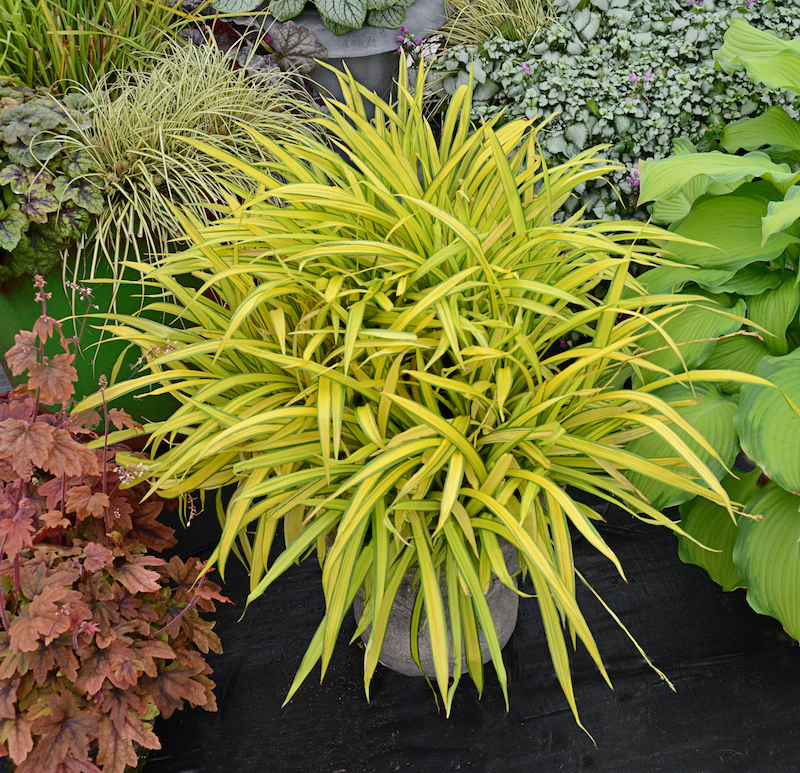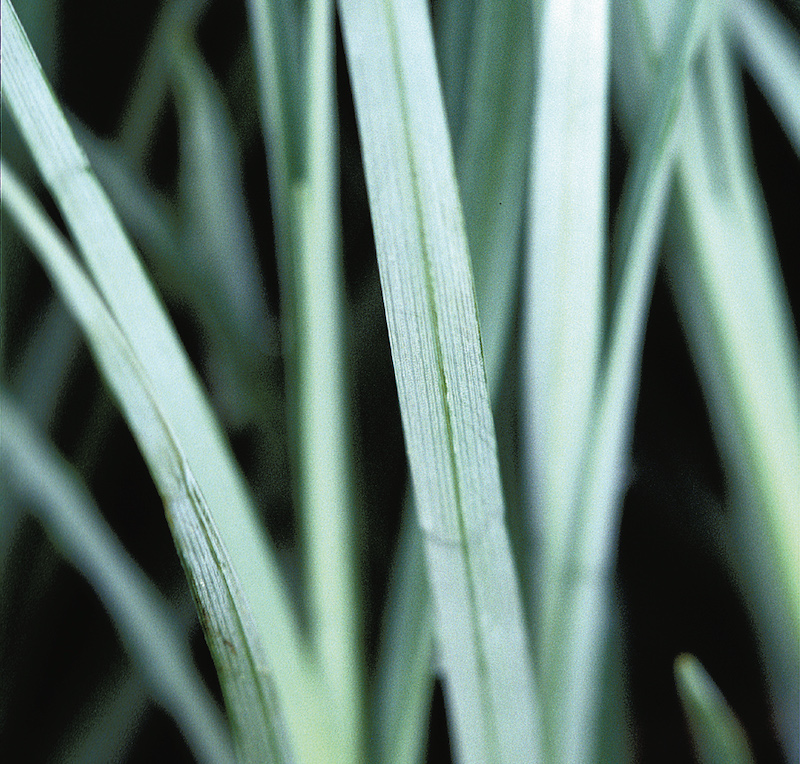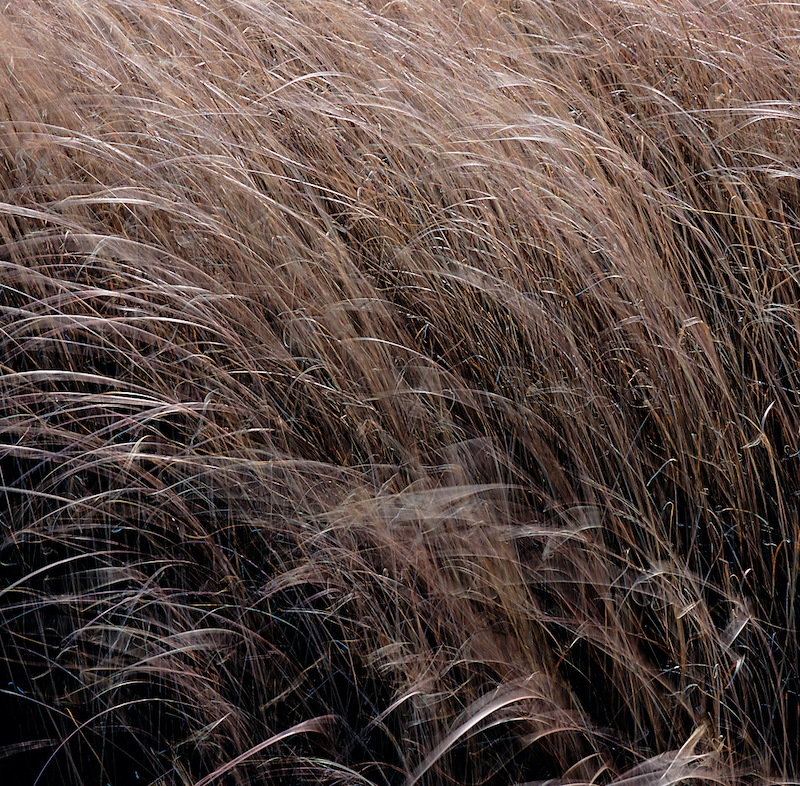Growing Sedge Grass
Sedge grass, also known as Carex, is a diverse group of plants that look like grasses, but are actually perennials. They grow in tufts of strappy leaves that usually stay evergreen in mild climates. Sedges come in a wide range of colors, including chartreuse, copper, bronze, yellow, blue and lime green. They are highly adaptable and are often used to fill large spaces, either as groundcovers or as alternatives to lawns.
Some types are better suited to moist, shaded sites, and other prefer hot, sunny areas; there is a different sedge species for practically any garden niche. Sedges usually bloom in spring, and the flowers are more or less inconspicuous. The plant size can vary depending on the species, with some sedges staying a few inches high, and others reaching 3 feet tall. They make wonderful edgers for a pond or garden pathway, and are highly suited for rock gardens and container gardens.

Planting Sedge Grass
Most sedge varieties prefer partial shade and can burn in too much sun; however, some species tolerate more sun, especially when grown in northern climates. Sedges are highly adaptable to different soil conditions, but most grow best in fertile, well-drained, moist soil. Some sedges, such as Carex oshimensis, thrive in boggy conditions and are great for planting around the edge of pond.
Others prefer dry spots, including Carex flacca and C. flaccosperma. Once you decide on the planting site, dig a hole just wide enough for the root ball, and set the the crown slightly above the soil surface. Backfill the hole with native soil and water thoroughly to fill in any air gaps around the roots. Apply a thick layer of compost to keep the root zone cool and conserve moisture.
Watering Sedge Grass
Many sedge varieties develop drought tolerance over time, but they perform best with a regular watering schedule during the growing season. Sedges grown in sunnier positions will require more frequent watering than those in shade. Make sure to give your sedges a long soak during hot, dry weather. Drip irrigation or soaker hoses are great options for applying water slowly to the root system with minimal evaporation. Containers dry out faster than plants in the ground and should be watered whenever the top inch of soil feels dry.
Fertilizing Sedge Grass
Most sedges are light feeders and do not require much fertilizer. If a soil test shows that your soil is deficient in key nutrients, you can use a light application of a well-balanced (10-10-10 NPK), slow-release formula in the spring. Sedges do not tolerate a buildup of fertilizer salt, so be careful not to overdo it. A better alternative to fertilizer is an application of organic compost around the root zone to reduce evaporation and improve the soil composition.
Pruning Sedge Grass
Many sedges are semievergreen throughout their growing range and require minimal cleanup. In the spring, cut back any damaged or dead foliage using a pair of sharp, sterilized pruning shears. Trim any dead ends during the summer to keep your sedge looking tidy. You should also pull out any rotted parts if the center is starting to die out.

Caring For Sedge Grass in Pots
Sedges make great container companions and are often used as the ‘filler’. If you are leaving your plantings out all winter, choose a frost-proof container with large drainage holes. The container should be a couple inches wider than the rootball.
To pot this grass, use potting soil specifically formulated for containers. Cover the roots with soil only to the depth that the sedge was originally planted, and leave a couple inches at the top of the container for watering. Water regularly during the summer when the top inch of soil is dry to the touch, approximately 2 times per week.
Winter Care for Sedge Grass
Sedges typically do not need any special winter care. In areas with mild winters, sedges will stay evergreen and will not need winter protection. At the lower end of their growing range, you can apply a thick layer of mulch to protect the roots from winter kill. In early spring, trim back any spent foliage before new growth starts to emerge. This perennial forms colonies that slowly expand by rhizomes each year.

Common Care Questions About Sedge Grass
Is Sedge Grass An Annual Or Perennial?
Sedge grass is a perennial and is treated as annual in some places in the US.
Does Sedge Grass Like Full Sun?
Sedge is at its best in partial to full shade. Exposed to full sun, it will tend to be lighter green and will require water to look its best.
Should Sedge Grass Be Cut Back?
Sedge does not respond well to cutting back. They can be trimmed if the older foliage does not look so good or is untidy.
Is Sedge Grass Invasive?
Sedge is considered damaging to lawns and invasive in some areas of the US.
Is Sedge Grass Drought Tolerant?
Sedge is drought and moisture-tolerant, and almost maintenance free.
Is Sedge Grass Poisonous?
Sedge grass is non-toxic to and animals and human.
Is Sedge Grass Deer Resistant?
Although no plant is deer-proof- Sedge is especially deer resistant, though many other types of grass are rarely damaged by deer browsing.
What Is The Growth Rate Of Sedge Grass?
Sedge is slow to moderate growing and should reach its mature height and spread within 2 years.
When Do You Plant Sedge Grass?
Generally, cool-weather sedges are best planted in fall.
How Do I Divide Sedge Grass?
Insert two forks back-to-back into the center of the clump to separate and pry it open.
Is Sedge Grass Edible?
Only Several species of the Sedge grass are edible. Most species of sedge are food for farm animals- cows, goats, and horses.
Sedge Grass Isn't Blooming
It is almost impossible for sedges not to bloom. In late spring, it bears inconspicuous brown flower spikes on long stems.
What Happens If You Don't Cut Sedge Grass Back?
Generally, nothing will happen if you don't cut sedge back. Some types will look tattered by spring and can be cleaned up to improve the appearance. Simply cut off any brown tips or winter damage.
Have a question about Sedge Grass Plant? Fill out the form below and we will try and get back to your question as soon as possible. We may even feature your question in this article to help other gardeners!
Plants We Recommend
 |
Author Jessica Mercer - Published 7-13-2022 |
